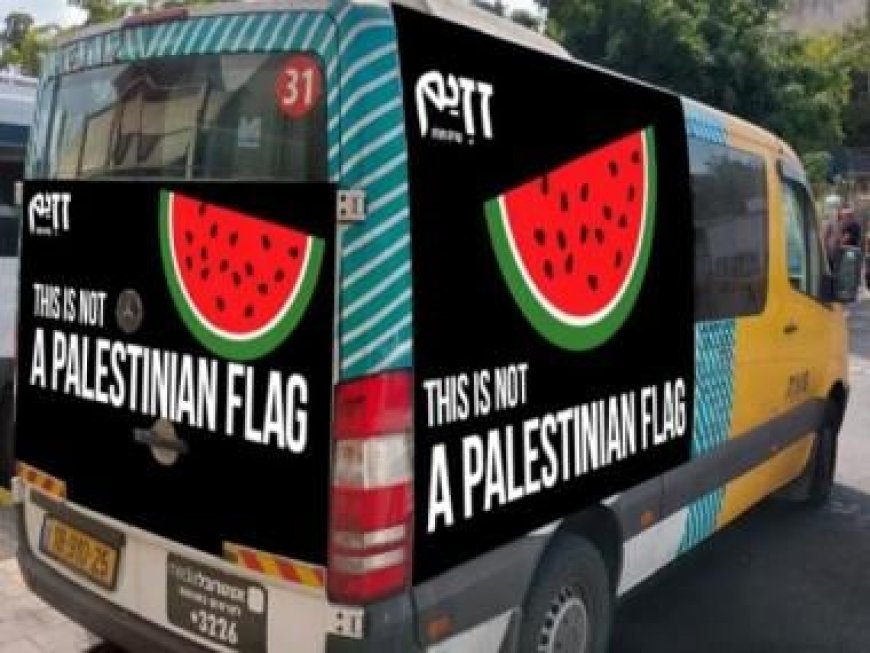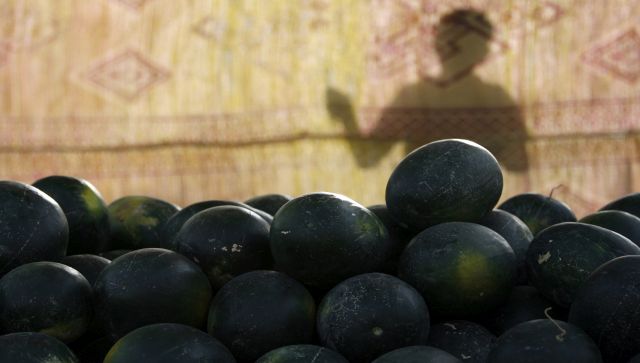Why people are using watermelon emojis to support Palestine
Why people are using watermelon emojis to support Palestine

Israel has been bombing the Gaza Strip for more than three weeks since the 7 October Hamas attack. More than 8,000 people, including thousands of children, have been killed in the retaliatory strikes. Even as Jerusalem has been accused of unleashing a humanitarian crisis in the enclave, the Israeli military is expanding its ground operation. The Jewish nation finds itself increasingly isolated as pro-Palestine protests have spread across the world. And emerging as a symbol of protest is the watermelon.
Demonstrations have been photographed carrying the mighty fruit or its pictures at protests. Those supporting Palestine have posted watermelon emojis to express their solidarity.
We take a look at how the mighty fruit came to be associated with the Palestinian cause.
Watermelon, a symbol of resistance
The colours of watermelon (red, white, black and green) also make up the colours of the Palestinian flag and the fruit symbolises the State’s culture and identity. It is grown across Palestine, from Jenin to Gaza. It is part of the cuisine and appears extensively in the nation’s literature.
Over the years, it has become a symbol of resistance, used by Palestinians to protest against Israel’s suppression of their identity and especially their flag.
After the Six-Day War in 1967, when Israel seized control of the West Bank, the Gaza Strip and East Jerusalem, the government made public display of the Palestinian flag in the occupied territory an offence. But was not just the flag.
Artist Sliman Mansour told The National in 2021 that Israeli officials in 1980 shut down an art exhibition in Ramallah featuring his work and that of other artists including Nabil Anani and Issam Badrl. “They told us that painting the Palestinian flag was forbidden, but also the colours were forbidden. So Issam said, ‘What if I were to make a flower of red, green, black and white?’, to which the officer replied angrily, ‘It will be confiscated. Even if you paint a watermelon, it will be confiscated,’” Mansour was quoted as by the publication.
In #Palestine , IDF warned an artist of painting a watermelonbecause it contains Palestinian flag colors! How stupid this is!#freePalestine #CeaseFireInGaza #Israel pic.twitter.com/SVxXp2KP6f
— عبدالله المالود (@Abd_almalood) October 25, 2023
To circumvent the ban, Palestinians started using the watermelon as a symbol of protest. The fruit now appears in art, on shirts, graffiti, posters, and as an emoji on social media.
The ban on the Palestinian flag was lifted when the 1993 Oslo Accords, the first formal agreement to resolve the conflict with Israel, were signed. It was accepted that the flag would represent the Palestinian Authority, which could administer Gaza and the West Bank, according to a report in TIME.
After the accords, in an article in The New York Times, journalist John Kifner wrote, “In the Gaza Strip, where young men were once arrested for carrying sliced watermelons – thus displaying the red, black and green Palestinian colours – soldiers stand by, blasé, as processions march by waving the once-banned flag.” The paper later retracted the detail, as it could not confirm the watermelon incident.

Palestinians claimed that the order was not completely revoked even after the Oslo Accords. In 2007, after the Second Intifada, artist Khaled Hourani designed the “Watermelon flag” for a book titled Subjective Atlas of Palestine. According to a report in TIME, he isolated one print in 2017 and named it “The Colours of the Palestinian Flag”, which has since been seen by people the world over.
The use of the symbol resurfaced in 2021 after an Israeli court ruled that Palestinian families based in East Jerusalem’s Sheikh Jarrah neighbourhood would be evicted from their homes to accommodate settlers, the report said.
Watermelon and the protests in 2023
The Palestinian flag once again came into the spotlight in January 2023. Israel’s national security minister Itamar Ben-Gviri instructed the police to confiscate Palestinian flags from public places. In June, a bill was passed to ban the flag in state-funded institutions including universities after it got preliminary approval from Knesset, the Israeli Parliament, according to a report in Haaretz.

Soon after, a young woman was arrested during a Pride parade for waving the flag but the police claimed she attacked officers when they tried to confiscate it. To protest against the crackdown on people waving the flags in public, Zazim, a grassroots Arab-Israeli peace organisation, started a campaign – they placed images of watermelons on shared taxis plying in Tel Aviv. The posters came with a message: This is not a Palestinian flag, reports The Times of Israel.
“Our message to the government is clear: we will always find a way to circumvent any absurd ban and we will not stop fighting for freedom of expression and democracy – whether it is the pride flag or the Palestinian flag,” Zazim director Raluca Ganea was quoted as saying by the outlet.
Now as anti-Israel protests rage on, the watermelon has surfaced, especially the emoji that accompanies social media posts. Several have found creative ways to tell the story of the watermelon and Palestine.
Sueanna Joe, an artsy housewife, created this illustration and posted it on X, formerly Twitter.
Feel free to use this as your profile picture in solidarity with Palestine I designed in Canva
Why watermelon you ask?
View explanation in quoted thread below pic.twitter.com/XR3o80iAVM
— ꜱᴜᴇᴀɴɴᴀᴊᴏᴇ 〄 ☠️️ (@sueannajoe_) October 27, 2023
Another has claimed that protesters in Germany, where pro-Palestine protests and symbols have been banned, are using watermelons to register their anger.
As the Palestinian Flag has been banned in parts of Germany, protestors have been using the symbol of a watermelon. I decided to use it in my art. #Palestine #CeaseFireInGaza #CeasefireNOW pic.twitter.com/ZA8J3CNACc
— A Tale of Art (@ataleof_art) October 23, 2023
The voices in support of Palestine are growing louder – and they are armed with the watermelon.
With inputs from agencies
What's Your Reaction?



























































